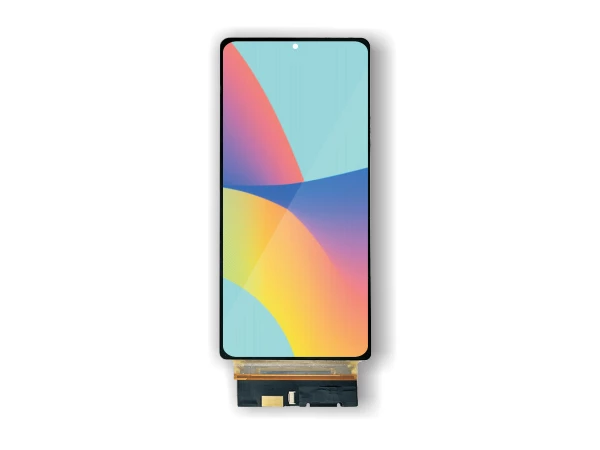Understanding TFT LCD with LVDS Interface: A Comprehensive Guide for Professionals
Oct 09,2025
When it comes to modern display technologies, TFT (Thin Film Transistor) LCDs equipped with LVDS (Low-Voltage Differential Signaling) interfaces have become increasingly popular due to their excellent performance and efficiency. Understanding the fundamentals of TFT LCDs and their integration with LVDS can significantly benefit professionals in the electrical and electronic sectors, particularly t
When it comes to modern display technologies, TFT (Thin Film Transistor) LCDs equipped with LVDS (Low-Voltage Differential Signaling) interfaces have become increasingly popular due to their excellent performance and efficiency. Understanding the fundamentals of TFT LCDs and their integration with LVDS can significantly benefit professionals in the electrical and electronic sectors, particularly those focusing on LED displays.
TFT LCDs are characterized by their ability to deliver high-quality images and vibrant colors, owing to their individual pixel control enabled by thin film transistors. This technology allows for improved response times and superior viewing angles, making it ideal for various applications, from consumer electronics to industrial displays.
The LVDS interface plays a crucial role in transmitting video data to the TFT LCD. It employs differential signaling, which reduces electromagnetic interference and improves signal integrity over longer distances. By using LVDS, professionals can ensure that high-resolution images are displayed with minimal data loss, maximizing the performance of their LED display systems.
One of the primary advantages of combining TFT LCD with LVDS is the reduced number of signal lines required for data transmission. Traditional parallel interfaces often require multiple lines for each pixel, leading to increased complexity and potential signal degradation. In contrast, LVDS significantly minimizes the number of required connections, which simplifies the design and reduces manufacturing costs.
Moreover, TFT LCDs with LVDS interfaces support higher refresh rates and resolutions, making them suitable for applications that demand real-time image processing, such as medical imaging and advanced gaming displays. Their capability to handle 1080p HD video and beyond makes them a go-to solution for high-definition applications.
For electrical engineers involved in the design and implementation of LED display systems, understanding the specifications of the TFT LCDs and the functionality of the LVDS interface is vital. Professionals should consider factors such as pixel density, response time, and power consumption when selecting components for their projects. Additionally, ensuring compatibility between the TFT LCD and the LVDS driver is essential to achieve optimal performance.
In summary, TFT LCDs with LVDS interfaces represent a critical technology in the evolution of LED display systems. Their ability to deliver high-quality images while maintaining signal integrity makes them an essential choice for professionals in the electrical engineering field. By leveraging this knowledge, you can enhance your projects and ensure that your display systems meet the demands of modern applications.
TFT LCDs are characterized by their ability to deliver high-quality images and vibrant colors, owing to their individual pixel control enabled by thin film transistors. This technology allows for improved response times and superior viewing angles, making it ideal for various applications, from consumer electronics to industrial displays.
The LVDS interface plays a crucial role in transmitting video data to the TFT LCD. It employs differential signaling, which reduces electromagnetic interference and improves signal integrity over longer distances. By using LVDS, professionals can ensure that high-resolution images are displayed with minimal data loss, maximizing the performance of their LED display systems.
One of the primary advantages of combining TFT LCD with LVDS is the reduced number of signal lines required for data transmission. Traditional parallel interfaces often require multiple lines for each pixel, leading to increased complexity and potential signal degradation. In contrast, LVDS significantly minimizes the number of required connections, which simplifies the design and reduces manufacturing costs.
Moreover, TFT LCDs with LVDS interfaces support higher refresh rates and resolutions, making them suitable for applications that demand real-time image processing, such as medical imaging and advanced gaming displays. Their capability to handle 1080p HD video and beyond makes them a go-to solution for high-definition applications.
For electrical engineers involved in the design and implementation of LED display systems, understanding the specifications of the TFT LCDs and the functionality of the LVDS interface is vital. Professionals should consider factors such as pixel density, response time, and power consumption when selecting components for their projects. Additionally, ensuring compatibility between the TFT LCD and the LVDS driver is essential to achieve optimal performance.
In summary, TFT LCDs with LVDS interfaces represent a critical technology in the evolution of LED display systems. Their ability to deliver high-quality images while maintaining signal integrity makes them an essential choice for professionals in the electrical engineering field. By leveraging this knowledge, you can enhance your projects and ensure that your display systems meet the demands of modern applications.
Key words:
Recommended
Exploring the Advantages of CTP Touch Screen Technology in LED Displays
Exploring the Advantages of CTP Touch Screen Technology in LED Displays
Table of Contents
1. Introduction to CTP Touch Screen Technology
2. What is CTP Touch Screen Technology?
3. Key Advantages of CTP Touch Screen Technology
3.1 Enhanced Precision and Responsiveness
3.2 Durability and Longevity
3.3 Improved User Experience





